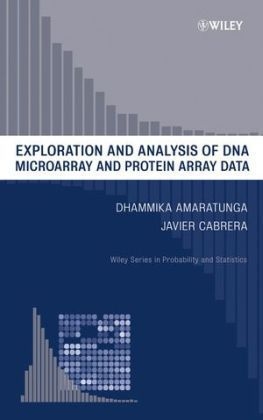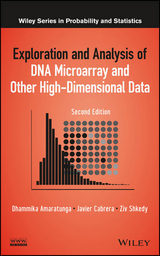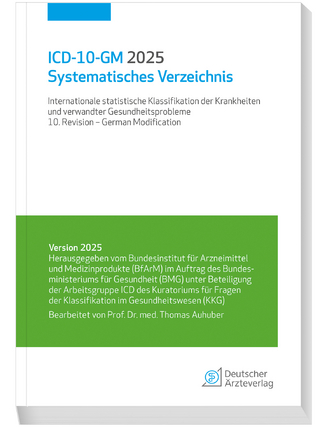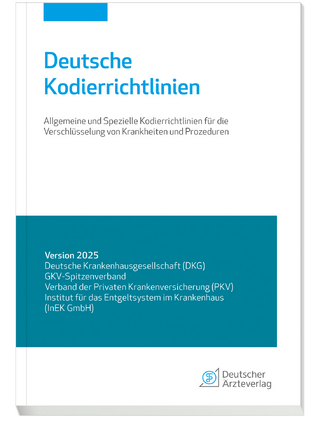
Exploration and Analysis of DNA Microarray and Protein Array Data
John Wiley & Sons Inc (Verlag)
978-0-471-27398-1 (ISBN)
- Titel erscheint in neuer Auflage
- Artikel merken
The emergence of genomics, the study of genes, is one of the major scientific revolutions of this century. Microarrays, a method used to analyze numerous DNA samples rapidly, enables scientists to make sense of this mountain of data using statistical analysis. They are being used in such areas of biomedical research as studying patterns for gene activity that cause cancers to spread. This book presents a comprehensive methodology for analyzing DNA microarray and protein array data. The most comprehensive treatment of this important emerging field, Exploration and Analysis of DNA Microarray and Protein Array Data includes: A review of basic molecular biology and a chapter introducing microarrays and their preparation Chapters on processing scanned images, preprocessing microarray data, group comparative experiments, and other designs Discussions of clustering, protein arrays, and applications for diagnostic tools Ample exercises assist absorbtion
DHAMMIKA AMARATUNGA, PhD, is a Senior Research Fellow in the Nonclinical Biostatistics Department at Johnson & Johnson Pharmaceutical Research & Development, LLC. He has a doctorate in statistics from Princeton University and has been working in the pharmaceutical industry for over fifteen years. His research interests include analysis of large multivariate data sets, particularly those generated by functional genomics research, robust and resistant statistical methods, linear and nonlinear modeling, and biostatistics. JAVIER CABRERA, PhD, is an Associate Professor in the Department of Statistics at Rutgers University. He has a doctorate in statistics from Princeton University and has over fifty publications in applied statistics. His research interests include DNA microarray, data mining of biopharmaceutical databases, computer vision, statistical computing and graphics, robustness, and biostatistics.
Preface.1 A Brief Introduction.1.1 A Note on Exploratory Data Analysis.1.2 Computing Considerations and Software.1.3 A Brief Outline of the Book.2 Genomics Basics.2.1 Genes.2.2 DNA.2.3 Gene Expression.2.4 Hybridization Assays and Other Laboratory Techniques.2.5 The Human Genome.2.6 Genome Variations and Their Consequences.2.7 Genomics.2.8 The Role of Genomics in Pharmaceutical Research.2.9 Proteins.2.10 Bioinformatics.Supplementary Reading.Exercises.3 Microarrays.3.1 Types of Microarray Experiments.3.1.1 Experiment Type 1: Tissue-Specific Gene Expression.3.1.2 Experiment Type 2: Developmental Genetics.3.1.3 Experiment Type 3: Genetic Diseases.3.1.4 Experiment Type 4: Complex Diseases.3.1.5 Experiment Type 5: Pharmacological Agents.3.1.6 Experiment Type 6: Plant Breeding.3.1.7 Experiment Type 7: Environmental Monitoring.3.2 A Very Simple Hypothetical Microarray Experiment.3.3 A Typical Microarray Experiment.3.3.1 Microarray Preparation.3.3.2 Sample Preparation.3.3.3 The Hybridization Step.3.3.4 Scanning the Microarray.3.3.5 Interpreting the Scanned Image.3.4 Multichannel cDNA Microarrays.3.5 Oligonucleotide Arrays.3.6 Bead-Based Arrays.3.7 Confirmation of Microarray Results.Supplementary Reading and Electronic References.Exercises.4 Processing the Scanned Image.4.1 Converting the Scanned Image to the Spotted Image.4.1.1 Gridding.4.1.2 Segmentation.4.1.3 Quantification.4.2 Quality Assessment.4.2.1 Visualizing the Spotted Image.4.2.2 Numerical Evaluation of Array Quality.4.2.3 Spatial Problems.4.2.4 Spatial Randomness.4.2.5 Quality Control of Arrays.4.2.6 Assessment of Spot Quality.4.3 Adjusting for Background.4.3.1 Estimating the Background.4.3.2 Adjusting for the Estimated Background.4.4 Expression Level Calculation for Two-Channel cDNA Microarrays.4.5 Expression Level Calculation for Oligonucleotide Arrays.4.5.1 The Average Difference.4.5.2 A Weighted Average Difference.4.5.3 Perfect Matches Only.4.5.4 Background Adjustment Approach.4.5.5 Model-Based Approach.4.5.6 Absent-Present Calls.Supplementary Reading.Exercises.5 Preprocessing Microarray Data.5.1 Logarithmic Transformation.5.2 Variance Stabilizing Transformations.5.3 Sources of Bias.5.4 Normalization.5.5 Intensity-Dependent Normalization.5.5.1 Smooth Function Normalization.5.5.2 Quantile Normalization.5.5.3 Normalization of Oligonucleotide Arrays.5.5.4 Normalization of Two-Channel Arrays.5.5.5 Spatial Normalization.5.5.6 Stagewise Normalization.5.6 Judging the Success of a Normalization.5.7 Outlier Identification.5.7.1 Nonresistant Rules for Outlier Identification.5.7.2 Resistant Rules for Outlier Identification.5.8 Assessing Replicate Array Quality.Exercises.6 Summarization.6.1 Replication.6.2 Technical Replicates.6.3 Biological Replicates.6.4 Experiments with Both Technical and Biological Replicates.6.5 Multiple Oligonucleotide Arrays.6.6 Estimating Fold Change in Two-Channel Experiments.6.7 Bayes Estimation of Fold Change.Exercises.7 Two-Group Comparative Experiments.7.1 Basics of Statistical Hypothesis Testing.7.2 Fold Changes.7.3 The Two-Sample t Test.7.4 Diagnostic Checks.7.5 Robust t Tests.7.6 Randomization Tests.7.7 The Mann-Whitney-Wilcoxon Rank Sum Test.7.8 Multiplicity.7.8.1 A Pragmatic Approach to the Issue of Multiplicity.7.8.2 Simple Multiplicity Adjustments.7.8.3 Sequential Multiplicity Adjustments.7.9 The False Discovery Rate.7.9.1 The Positive False Discovery Rate.7.10 Small Variance-Adjusted t Tests and SAM.7.10.1 Modifying the t Statistic.7.10.2 Assesing Significance with the SAM t Statistic.7.10.3 Strategies for Using SAM.7.10.4 An Empirical Bayes Framework.7.10.5 Understanding the SAM Adjustment.7.11 Conditional t.7.12 Borrowing Strength across Genes.7.12.1 Simple Methods.7.12.2 A Bayesian Model.7.13 Two-Channel Experiments.7.13.1 The Paired Sample t Test and SAM.7.13.2 Borrowing Strength via Hierarchical Modeling.Supplementary Reading.Exercises.8 Model-Based Inference and Experimental Design Considerations.8.1 The F Test.8.2 The Basic Linear Model.8.3 Fitting the Model in Two Stages.8.4 Multichannel Experiments.8.5 Experimental Design Considerations.8.5.1 Comparing Two Varieties with Two-Channel Microarrays.8.5.2 Comparing Multiple Varieties with Two-Channel Microarrays.8.5.3 Single-Channel Microarray Experiments.8.6 Miscellaneous Issues.Supplementary Reading.Exercises.9 Pattern Discovery.9.1 Initial Considerations.9.2 Cluster Analysis.9.2.1 Dissimilarity Measures and Similarity Measures.9.2.2 Guilt by Association.9.2.3 Hierarchical Clustering.9.2.4 Partitioning Methods.9.2.5 Model-Based Clustering.9.2.6 Chinese Restaurant Clustering.9.2.7 Discussion.9.3 Seeking Patterns Visually.9.3.1 Principal Components Analysis.9.3.2 Factor Analysis.9.3.3 Biplots.9.3.4 Spectral Map Analysis.9.3.5 Multidimensional Scaling.9.3.6 Projection Pursuit.9.3.7 Data Visualization with the Grand Tour and Projection Pursuit.9.4 Two-Way Clustering.9.4.1 Block Clustering.9.4.2 Gene Shaving.9.4.3 The Plaid Model.Software Notes.Supplementary Reading.Exercises.10 Class Prediction.10.1 Initial Considerations.10.1.1 Misclassification Rates.10.1.2 Reducing the Number of Classifiers.10.2 Linear Discriminant Analysis.10.3 Extensions of Fisher's LDA.10.4 Nearest Neighbors.10.5 Recursive Partitioning.10.5.1 Classification Trees.10.5.2 Activity Region Finding.10.6 Neural Networks.10.7 Support Vector Machines.10.8 Integration of Genomic Information.10.8.1 Integration of Gene Expression Data and Molecular Structure Data.10.8.2 Pathway Inference.Software Notes.Supplementary Reading.Exercises.11 Protein Arrays.11.1 Introduction.11.2 Protein Array Experiments.11.3 Special Issues with Protein Arrays.11.4 Analysis.11.5 Using Antibody Antigen Arrays to Measure Protein Concentrations.Exercises.References.Author Index.Subject Index.
| Erscheint lt. Verlag | 18.11.2003 |
|---|---|
| Reihe/Serie | Wiley Series in Probability and Statistics |
| Zusatzinfo | Illustrations |
| Verlagsort | New York |
| Sprache | englisch |
| Maße | 161 x 237 mm |
| Gewicht | 588 g |
| Einbandart | gebunden |
| Themenwelt | Informatik ► Weitere Themen ► Bioinformatik |
| Mathematik / Informatik ► Mathematik ► Wahrscheinlichkeit / Kombinatorik | |
| Naturwissenschaften ► Biologie ► Genetik / Molekularbiologie | |
| ISBN-10 | 0-471-27398-8 / 0471273988 |
| ISBN-13 | 978-0-471-27398-1 / 9780471273981 |
| Zustand | Neuware |
| Informationen gemäß Produktsicherheitsverordnung (GPSR) | |
| Haben Sie eine Frage zum Produkt? |
aus dem Bereich



